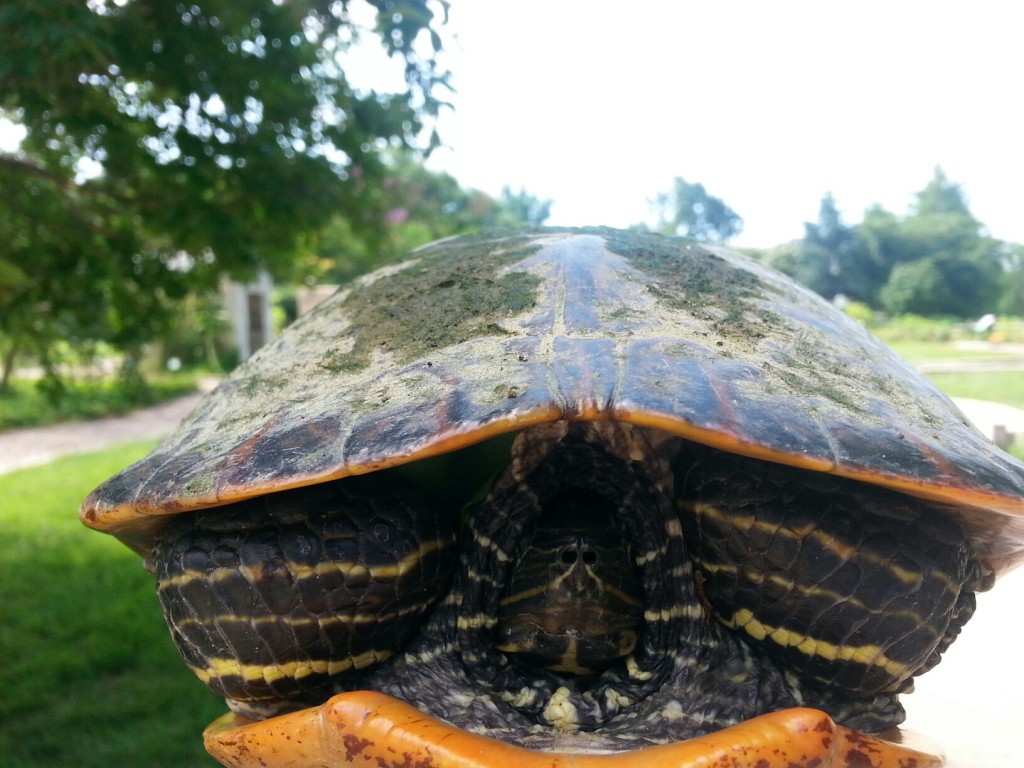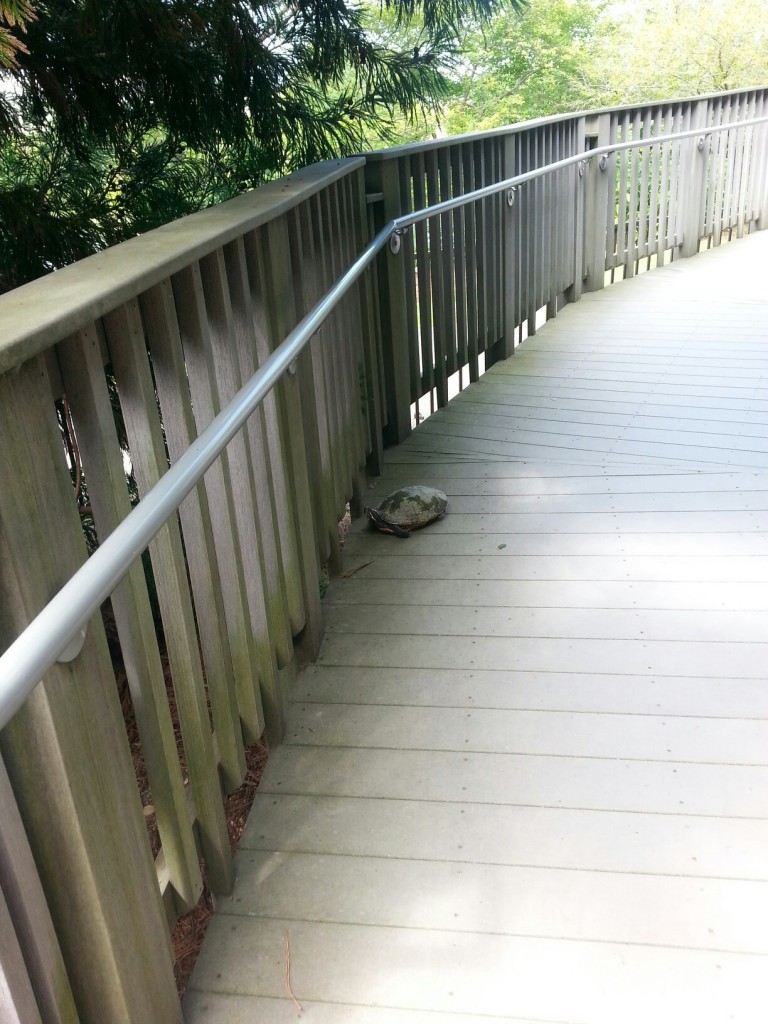Cooters in the Tree House
by Kristi Orcutt, Children’s Garden Program Developer, Lewis Ginter Botanical Garden
I spied a female Eastern River Cooter traveling up the ramp toward the CWD Children’s Garden Tree House. Perhaps after emerging from the pond, she crossed the path and found an opening in the Children’s Garden gate and headed up the ramp. I surmised that she was following her instinct to seek higher ground where she planned to lay her eggs.
I carried her back down the ramp to a more suitable area for laying eggs (from my perspective) near the Lotus Bridge where the ground is elevated and the soil soft, but where foot traffic is limited. Who knows what she thought of the site!
Reptiles (which include marine, fresh-water and terrestrial turtles) have semi-permeable eggs that must be deposited on dry land, above high tide and flood lines. If a nest of turtle eggs is inundated with water, the embryos would drown. Female River Cooters travel up to 100 feet from the water’s edge, dig a hole using their rear legs and deposit between 10 – 25 eggs. We can hope to spot the tiny (1.5-inch diameter) hatchlings emerging from their nest and scrambling toward the lake in August or September.
“The name “cooter” may have come from an African word “kuta” which means “turtle.”
The Virginia Herpetological Society is an excellent resource for information about Pseudemys concinna concinna (Easter River Cooter) and other Virginia turtles, if you’d like to learn more.
http://www.virginiaherpetologicalsociety.com/reptiles/turtles/turtles_of_virginia.htm

